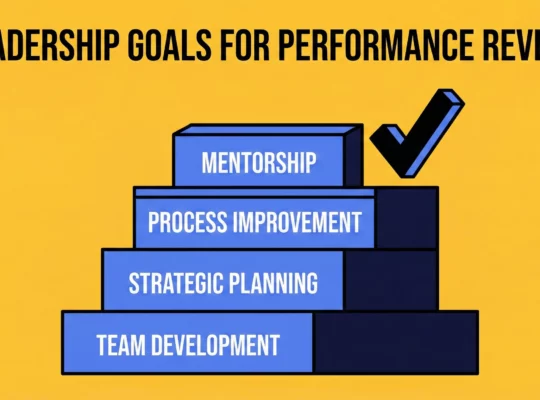Takeaways
- Employee Experience (EX) drives productivity, engagement, and retention, impacting organizational success.
- Investing in EX through personalized development, flexible policies, and seamless technology integration enhances employee satisfaction.
- Aligning EX with CX results in a strong brand reputation, loyalty, and competitive advantage.
- Regular employee reviews and data-driven insights are key to continuously improving EX.
Employee experience (EX) is at the heart of a productive, engaged, and committed workforce. As more companies prioritize the holistic employee journey—from recruitment through exit—EX emerges as a strategic advantage that enhances employee engagement, boosts retention, and fuels long-term growth. For HR leaders and CPOs, understanding and improving EX is essential to meeting workforce needs in today’s fast-evolving work landscape. This guide dives into key challenges and effective solutions to cultivate a thriving EX, aligning with business goals and elevating Review.jobs as a resource in the journey.
Table of Contents
Understanding Employee Experience
What is Employee Experience?
Employee Experience encompasses all interactions between an employee and their employer, shaping how employees feel about their workplace. EX extends beyond engagement to include elements like workforce satisfaction, organizational culture, and the overall employee journey, often referred to as the employee lifecycle. It reflects an organization’s commitment to understanding and meeting employee needs at every career stage.
Importance of Employee Experience
Focusing on EX is critical for employee retention and overall business success. Research shows that companies investing in EX see higher productivity and profitability. Enhanced EX drives employee engagement, boosts morale, and reduces turnover—key indicators of a thriving, people-centric organization. Employee satisfaction metrics like eNPS (Employee Net Promoter Score) further reveal the impact on loyalty and retention.
A survey by SHRM concluded that employee experience is either the first or second highest priority of 46% of HR professionals and 36% of US workers.
Source: SHRM Survey Press Release
Key Challenges in Employee Experience
Challenge 1: Selecting the Right Technology
Modern technology is integral to delivering a seamless EX. Yet, balancing new tech with existing systems is often challenging, leading to tech overload or poor integration. User-friendly, centralized solutions, such as cloud-based Human Capital Management (HCM) systems, help streamline workflows and make information accessible, positively influencing EX.
Challenge 2: Creating Connections for Remote and Hybrid Teams
With remote and hybrid work models on the rise, fostering a connected and inclusive environment is essential. Digital tools like video conferencing, messaging platforms, and employee review mechanisms help bridge gaps, promote teamwork, and ensure that all employees feel valued, regardless of their location.
Related: Onboarding Remote Employees – A 6-Step Guide
Challenge 3: Personalizing Employee Development
Generic development programs don’t resonate with today’s workforce. Employees seek career development paths tailored to their aspirations. By leveraging data-driven insights for EX and creating personalized career growth opportunities, HR can foster a culture that values individual development and engagement.
Challenge 4: Maintaining Employee Satisfaction
Meaningful work, workplace flexibility, and growth opportunities are top drivers of satisfaction. Measuring satisfaction through tools like eNPS and employee pulse surveys can help gauge workplace sentiment and reveal opportunities to enhance satisfaction and retention.
Challenge 5: Combating Employee Burnout
High workloads and inefficient processes often lead to burnout, decreasing employee productivity metrics and engagement. Companies can combat this by balancing workloads, setting clear expectations, and promoting wellness initiatives that create a supportive environment.
Challenge 6: Ensuring Financial Security and Stability
Employees prioritize job stability and competitive pay, especially during uncertain times. Organizations can foster loyalty by offering clear compensation structures and transparency about financial stability, which reinforces trust and commitment.
Challenge 7: Aligning Values and Purpose
More employees now seek value alignment, wanting their employer’s values to reflect their own. Companies can reinforce alignment by embedding values into everyday operations and leadership engagement.
Stages of the Employee Lifecycle and Their Impact on EX
Lifecycle Overview
The employee lifecycle includes stages from recruitment to exit, with each stage significantly impacting EX. Understanding this cycle helps HR tailor approaches to foster a supportive environment throughout an employee’s journey.
Stage 1: Recruitment
A positive first impression matters. Clear job descriptions and a well-structured hiring process are vital to attract top talent and create a lasting impact. Measuring recruitment metrics can provide insights for improvement.
Stage 2: Onboarding
Effective onboarding reinforces organizational culture and introduces new hires to company values. This stage sets the tone for future engagement, making it crucial for leadership engagement to create a smooth, impactful onboarding experience.
Stage 3: Development and Training
Ongoing employee development programs and upskilling are essential for engagement and retention. Skill-building initiatives and professional growth opportunities help employees reach their potential, benefiting both employees and the organization.
Stage 4: Retention and Engagement
Retention initiatives, including recognition and reward systems, motivate employees and reduce turnover. Implementing employee-centered solutions encourages loyalty and builds a stronger workplace culture.
Stage 5: Exit and Feedback
Exit interviews offer invaluable insights for improving EX. Collecting authentic reviews from departing employees can inform strategies to enhance retention and satisfaction.
The Three Key EX Environments
Company Culture
A strong company culture shapes daily experiences, promoting psychological safety and inclusivity. Leadership’s role in fostering a transparent, employee advocacy-driven culture cannot be overstated.
Technology Environment
Updated, accessible technology is critical for EX. Tools that simplify work processes and support employee-centric technology help employees thrive. Investing in intuitive tech improves efficiency and connectivity.
Physical Workplace Environment
The physical workspace influences employee well-being and productivity. Offering flexibility in workspace options, whether in-office or remote, enables employees to work effectively in a comfortable environment.
Connecting Employee Experience with Customer Experience
EX-CX Connection
A positive EX leads to satisfied, engaged employees who create better customer experiences (CX). Companies with strong EX strategies often see increased brand loyalty and higher employer brand reputation.
Using Predictive Tools
Use tools to analyze how EX affects CX, revealing insights into how employee satisfaction directly impacts customer loyalty and business outcomes.
Measuring and Monitoring Employee Experience
Key Metrics and Tools for EX
Tracking metrics like eNPS and conducting regular surveys (e.g., onboarding, training feedback) offer a real-time view into EX. Blending operational data (O-Data) with experience data (X-Data) uncovers key trends.
Using Feedback for Continuous Improvement
A continuous feedback loop enables organizations to listen to employee needs and make timely adjustments, promoting a culture of organizational agility and improvement.
Building an Effective EX Strategy
Define a Clear EX Strategy
Aligning EX strategy with business goals creates a unified approach to employee engagement. A defined strategy clarifies EX priorities and directs resources effectively.
Assign Leadership and Ownership
Leaders like a Chief Experience Officer (CXO) ensure that EX goals align across departments, highlighting the strategic importance of employee well-being.
Invest in Technology and Tools
Predictive analytics, automation, and employee listening engines enhance data collection, turning insights into action. Choosing the right tools supports a holistic employee experience.
Promote a Continuous Improvement of Culture
Regularly assessing and refining EX initiatives fosters a workplace culture of continuous improvement, encouraging employees to voice their needs and ideas.
FAQ
What is Employee Experience (EX)?
Employee Experience is the journey of each interaction an employee has with their employer, from recruitment to exit.
How does EX impact business outcomes?
Investing in EX improves engagement, productivity, retention, and customer satisfaction, fostering long-term growth.
What role does technology play in EX?
Technology simplifies workflows, enhances communication, and supports a positive EX, especially in remote and hybrid work environments.
Why is measuring EX important?
Tracking EX metrics provides insights for improvement, enabling companies to address issues before they impact morale and retention.
By addressing EX challenges and opportunities with Review.jobs as a trusted partner, organizations can create a workplace where employees feel valued, engaged, and motivated, ultimately boosting performance and brand loyalty.





